This article was medically reviewed by Victor Catania, MD. Dr. Catania is a board certified Family Medicine Physician in Pennsylvania. He received his MD from the Medical University of the Americas in 2012 and completed his residency in Family Medicine at the Robert Packer Hospital. He is a member of the American Board of Family Medicine.
There are 14 references cited in this article, which can be found at the bottom of the page.
wikiHow marks an article as reader-approved once it receives enough positive feedback. This article received 17 testimonials and 95% of readers who voted found it helpful, earning it our reader-approved status.
This article has been viewed 170,611 times.
Research shows that shingles is caused by the virus known as varicella zoster that shows up on your skin in the form of a blistering rash.[1] While the rash can appear anywhere on your body, it often wraps around the right or left side of your torso and can cause itching, numbness, tingling, or pain. While there is no cure for shingles, studies suggest that it can be managed with medication and regular care from your physician.[2]
Steps
Managing an Outbreak
-
1Recognize the symptoms. Shingles begins with pain, itching, burning, numbness, and/or tingling for 1 to 5 days.[3] Then you develop a rash. In people with normal immune systems, the rash usually occurs as a single, distinct stripe on one side of your body or on your face. Some people with weak immune systems may have a rash all over their body.[4]
-
2Seek medical treatment immediately. You should see a doctor as soon as you develop a rash. It is best if you get to the doctor within 3 days (sooner if the rash is on your face). The doctor can diagnose you and make a treatment plan. Early treatment can help your blisters dry up faster and decrease your pain.[7]Advertisement
-
3Try home remedies. While you are having an outbreak you should wear loose-fitting clothes made of natural fabrics, get lots of rest, and eat healthy. You can also try taking an oatmeal bath or using calamine lotion to calm your skin.[10]
- Try wearing silk or cotton fabrics instead of wool or acrylic clothing.
- You can add a handful of ground or colloidal oatmeal to your bath to soothe your skin. You can also buy oatmeal bath products that can be added to your bath.[11]
- Apply calamine lotion after you bathe and your skin is still damp.[12]
-
4Reduce stress. Stress can make your shingles more painful. try to do things that take your mind off of your pain by doing things that you enjoy like reading, listening to music, or talking with friends or family.[13] Stress can also trigger an outbreak, so do what you can to avoid it.
- Meditation and deep breathing techniques can help you relieve the stress of enduring a shingles outbreak, and may help reduce your pain.[14]
- You can meditate by silently repeating a calming thought or word to keep you from being distracted by your thoughts.[15]
- You could also try guided meditation where you focus on a mental image or place that you find relaxing. As you visualize this place, you should try to incorporate the smells, sights, and sounds. It is helpful if you have someone else guide you through the visualization process.[16]
- Tai chi and yoga are also other ways to reduce stress. Both of these combine specific postures and deep breathing exercises.[17]
-
5Take an antiviral medication. Your physician will likely prescribe valacyclovir (Valtrex), acyclovir (Zovirax), famciclovir (Famvir), or a similar drug to treat your shingles. Take the medication as directed by your doctor and pharmacist, and talk to them about any potential side effects or reactions with other medications you are taking.[18]
- You should take these medications as soon as possible so that they will be effective. This is why you should get to your doctor as soon as your rash appears.[19]
-
6Take a pain medication. The pain you feel during a shingles outbreak should be brief, but it may be intense. Depending on the level of pain and your medical history, your doctor may prescribe something with codeine, or a medication that will manage long term pain such as an anticonvulsant.[20]
- Your doctor may also prescribe numbing medication like lidocaine. It may be applied as a cream, gel, spray,or a skin patch.[21]
- Your doctor may also inject you with corticosteroids or a local anesthetics to manage your pain.[22]
- Prescription capsaicin cream, which contains the active ingredient in chili peppers, can also help manage pain when you apply it to the rash.[23]
-
7
Dealing with Shingles Complications
-
1Recognize PHN. One out of five people with shingles will develop post-herpetic neuralgia (PHN). You may have PHN if you are experiencing severe pain in the same area where you had your shingles rash.[28] PHN can last for weeks or months. Some people can experience symptoms for years.[29]
- The older you are, the more likely you are to develop PHN.[30]
- If you experience pain when things touch your skin (e.g., clothes, wind, people), you may have PHN.
- If you wait too long to seek treatment, you may be more likely to develop PHN.
-
2Watch out for complications. While PHN is the most common complication, there are other complications such as pneumonia, hearing problems, blindness, brain inflammation (encephalitis), or death.[31] Scarring, bacterial skin infection, and local muscle weakness are also possible complications.
-
3Seek medical treatment. If you think you are suffering from PHN or other shingles complications, you should go see your doctor. Your doctor will be able to develop a treatment plan to manage your complications. Your treatment plan will be focused on managing your chronic pain.
- Your treatment plan may include topical agents such as lidocaine, analgesics such as oxycodone, anti-convulsants such as gabapentin (Neurontin) or pregabalin (Lyrica), or psychosocial interventions.
- Many people may experience depression or other mental health issues when they deal with chronic pain. Your doctor may prescribe you antidepressants or recommend that you receive cognitive behavioral therapy. Your cognitive behavioral therapy may include relaxation techniques or hypnosis. Both of these techniques are effective for managing chronic pain.
-
4Get the shingles vaccine. If you are 60 and older, you should get the shingles vaccine. Even though you have had shingles before, you should still get the vaccine.[32] You can get the vaccine at your doctor's office or at the pharmacy.
-
5Take care of your overall health. Living with shingles means that anything can trigger an outbreak, including stress, a lowered immune system, poor diet and exhaustion.[35] While getting vaccinated is the only way to prevent shingles, having good overall health can help you avoid another outbreak and recover from shingles better.
- Eat a balanced diet and get plenty of vitamins, minerals and antioxidants.
- Exercise regularly and get plenty of rest.
References
- ↑ https://www.mayoclinic.org/diseases-conditions/shingles/symptoms-causes/syc-20353054
- ↑ https://www.mayoclinic.org/diseases-conditions/shingles/diagnosis-treatment/drc-20353060
- ↑ http://www.mayoclinic.org/diseases-conditions/shingles/basics/symptoms/con-20019574
- ↑ http://www.cdc.gov/shingles/about/symptoms.html
- ↑ http://www.mayoclinic.org/diseases-conditions/shingles/basics/symptoms/con-20019574
- ↑ http://www.cdc.gov/shingles/about/symptoms.html
- ↑ https://www.nia.nih.gov/health/publication/shingles#last
- ↑ https://www.nia.nih.gov/health/publication/shingles#last
- ↑ http://www.mayoclinic.org/diseases-conditions/shingles/basics/treatment/con-20019574
- ↑ https://www.nia.nih.gov/health/publication/shingles#last
- ↑ http://www.cdc.gov/shingles/about/prevention-treatment.html
- ↑ https://www.aad.org/public/diseases/contagious-skin-diseases/shingles
- ↑ https://www.nia.nih.gov/health/publication/shingles#last
- ↑ http://www.mayoclinic.org/healthy-lifestyle/stress-management/basics/stress-basics/hlv-20049495
- ↑ http://www.mayoclinic.org/tests-procedures/meditation/in-depth/meditation/art-20045858
- ↑ http://www.mayoclinic.org/tests-procedures/meditation/in-depth/meditation/art-20045858
- ↑ http://www.mayoclinic.org/tests-procedures/meditation/in-depth/meditation/art-20045858
- ↑ http://www.cdc.gov/shingles/about/prevention-treatment.html
- ↑ http://www.cdc.gov/shingles/about/prevention-treatment.html
- ↑ http://www.mayoclinic.org/diseases-conditions/shingles/basics/treatment/con-20019574
- ↑ http://www.mayoclinic.org/diseases-conditions/shingles/basics/treatment/con-20019574
- ↑ http://www.mayoclinic.org/diseases-conditions/shingles/basics/treatment/con-20019574
- ↑ http://www.mayoclinic.org/diseases-conditions/shingles/basics/treatment/con-20019574
- ↑ https://www.aad.org/public/diseases/contagious-skin-diseases/shingles
- ↑ https://www.nia.nih.gov/health/publication/shingles#last
- ↑ http://www.webmd.com/skin-problems-and-treatments/tc/itchy-blisters-home-treatment-topic-overview
- ↑ http://www.webmd.com/skin-problems-and-treatments/tc/itchy-blisters-home-treatment-topic-overview
- ↑ http://www.cdc.gov/shingles/about/complications.html
- ↑ http://www.cdc.gov/shingles/about/complications.html
- ↑ http://www.cdc.gov/shingles/about/complications.html
- ↑ http://www.cdc.gov/shingles/about/complications.html
- ↑ https://www.nia.nih.gov/health/publication/shingles#last
- ↑ https://www.nia.nih.gov/health/publication/shingles#last
- ↑ http://www.cdc.gov/vaccines/vpd-vac/shingles/vacc-need-know.htm#protection
- ↑ https://www.nia.nih.gov/health/publication/shingles#tips
About This Article
Shingles can be unpleasant when left untreated, but fortunately with medical support and home treatments, you can live with the condition more comfortably. When you get a shingles rash, which looks like a single strip on one side of your body or face, visit your doctor as soon as possible so they can treat you. Your doctor may prescribe painkillers or topical numbing agents to help relieve your symptoms. While you’re recovering, wear loose clothes and try to avoid scratching your rash. To reduce your irritation, rub calamine lotion on your skin, apply a cool, damp washcloth to your rash, or take a cool bath. You can also put a handful of oatmeal in the bath to help soothe your skin. For more tips from our Medical co-author, including how to take care of your diet to reduce the severity of your shingles, read on.
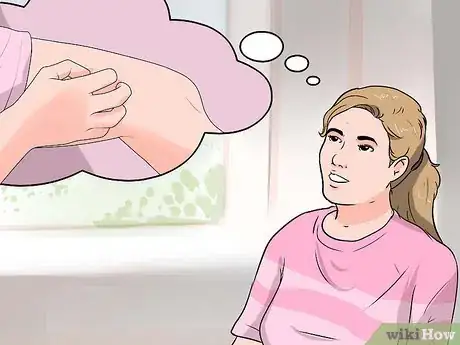
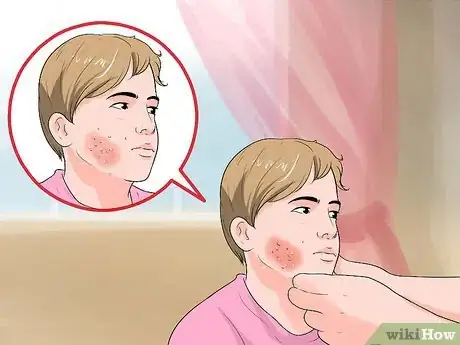
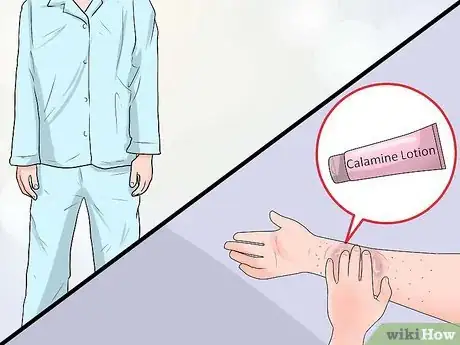
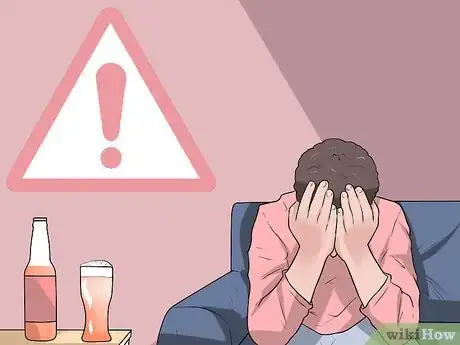

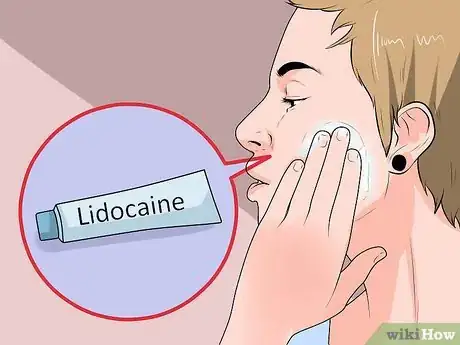
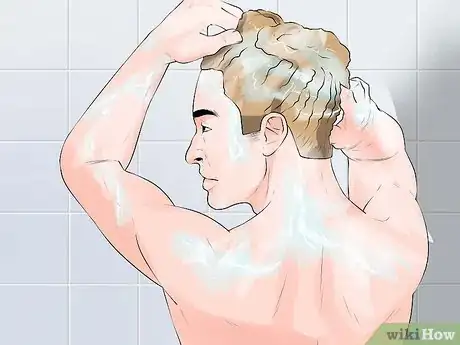
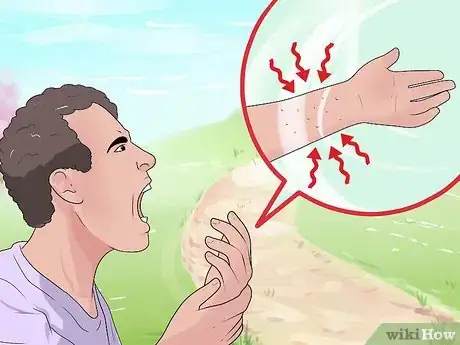
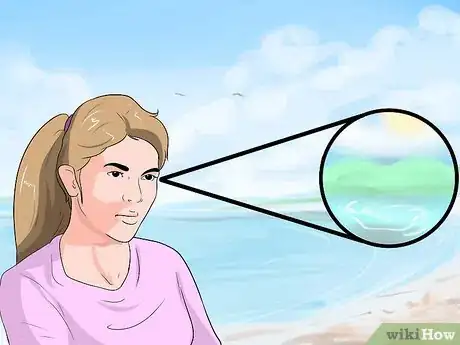

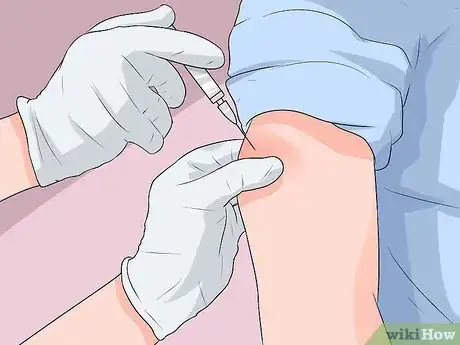

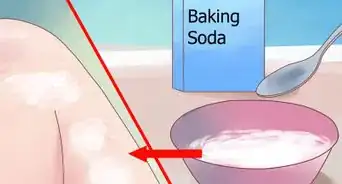
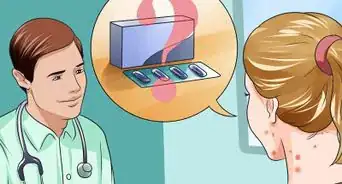
-Step-13.webp)


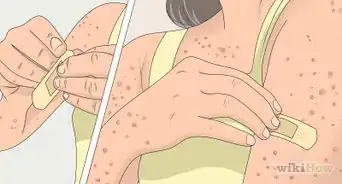
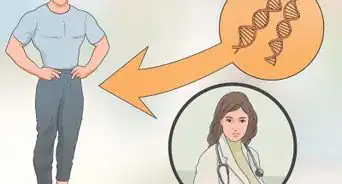
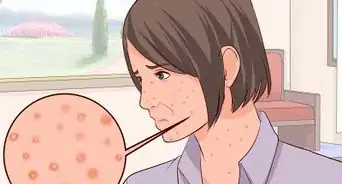

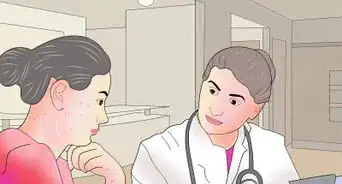
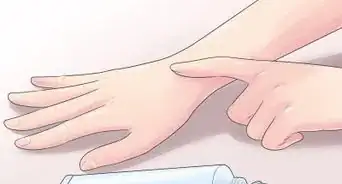











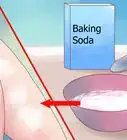
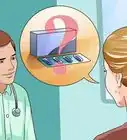
-Step-13.webp)
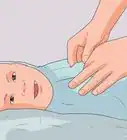



































Medical Disclaimer
The content of this article is not intended to be a substitute for professional medical advice, examination, diagnosis, or treatment. You should always contact your doctor or other qualified healthcare professional before starting, changing, or stopping any kind of health treatment.
Read More...